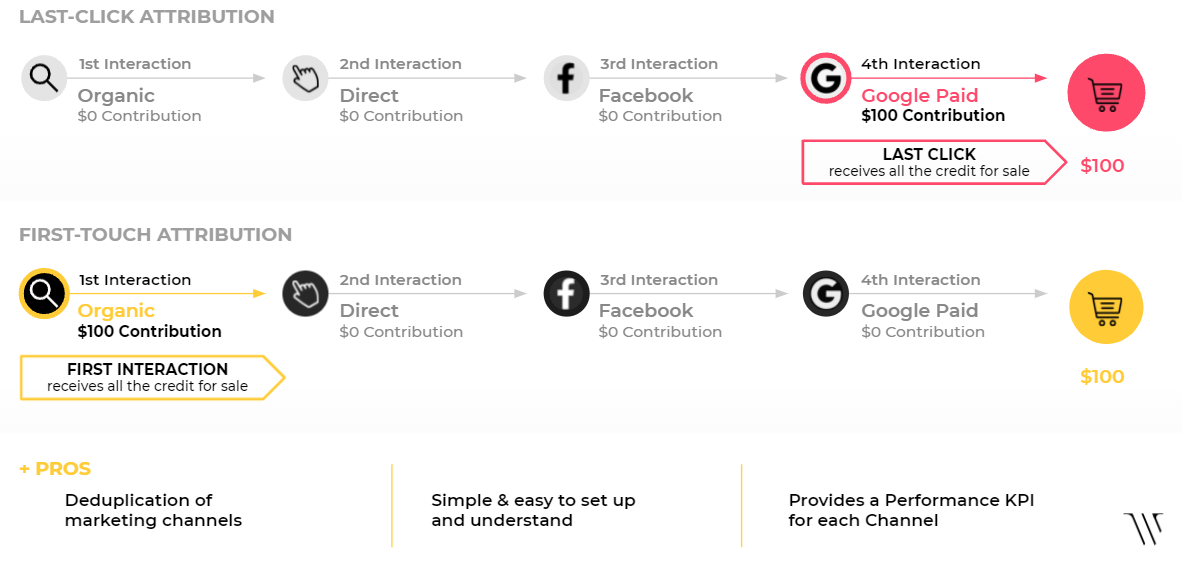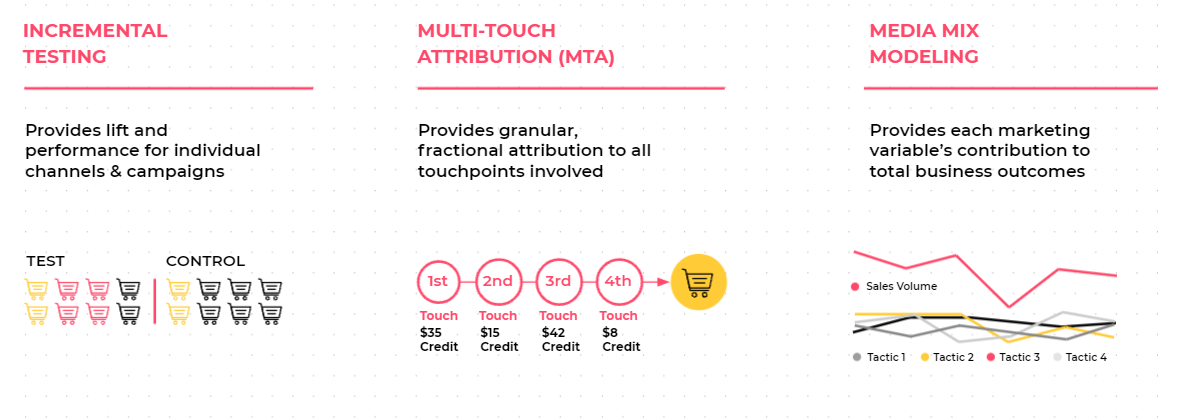[Event Recap] CommerceNext — Keep Your Eyes on the Prize: Unlocking the Keys to Attribution

On September 28th and 29th, retail, tech industry experts, and direct-to-consumer (DTC) experts gathered for the annual CommerceNext event in New York City.
The event featured speakers from all over the world covering a wide array of consumer behavior-related topics in the realm of eCommerce.
WITHIN CEO Joe Yakuel partnered with Casper VP of Performance Media, Katie Reed to present: Keep Your Eyes on the Prize: Unlocking The Keys To Attribution.
Attribution is one of the most elusive but essential elements of marketing. However, there is no single, one-size-fits-all, solution to measuring and attributing marketing results. Brands need to lead how to mix customized attribution methods/models for more accurate insights.
Models like mixed media modeling (MMM), multi-touch attribution (MTA), and incrementality testing allow marketers to strategically pivot measurement techniques for long-term profitability.
In their presentation, Joe Yakuel and Katie Reed summarized the problem with mainstream attribution techniques and introduced a framework to tackle marketing attribution for effective marketing measurement.
How to Measure Your Marketing Program
There are a number of different measurement and attribution strategies. However, the simplest and most streamlined solutions don’t always provide accurate attribution information.
Without accurate marketing attribution, your brand could be spending excess marketing dollars on ads and content that are not providing incremental returns.
The panel explained attribution models and their associated benefits and drawbacks.
First/Last-Click Attribution Is Easy but Flawed
First and last-click attribution models are easy to understand, straightforward to measure and give a sense of channel attribution.
Some pros to using first/last-click attribution include:
- Easy to measure and simple to understand
- Provides a Performance KPI for each Channel
- Deduplication of marketing channels
However, these systems almost never give credit to proper marketing channels.
Cons to the first/last-click attribution model include:
- No View-Through or Cross-Device credit
- Bias to specific Channels based on position in Consumer Journey
- Leads to inefficient & inaccurate budget allocation decisions
- Does not account for the long-term profitability of a brand
Brands need to move away from easy but inaccurate attribution models to maximize effectiveness and increase long-term profitability.
To combat the ineffectiveness of these measurement systems, there are a number of measurement and attribution tools that brands can use.
Advantages and Challenges of Measurement and Attribution Tools
A great alternative to first/last-click attribution is measurement and attribution tools like incremental testing, multi-touch attribution, and media mix modeling.
These measurement and attribution techniques give a fuller, clearer, more well-rounded picture of marketing results on all channels.
Each measurement tool is powerful and provides its own advantages and drawbacks.
Incrementality Testing – Provides lift and performance for individual channels & campaigns. Testing is limited to a single platform, has no full view of the customer journey, and can be inconsistent across different platforms.
Multi-Touch Attribution (MTA) – Provides granular, fractional attribution to all touchpoints involved. However, MTA requires intensive resources, is limited to Google and Facebook, and may miss offline sales.
Media Mix Modeling (MMM) – Provides each marketing variable’s contribution to total business outcomes. MMM can be difficult to integrate, limited speed is hard to integrate, and can lack adaptability.
The best way to leverage the advantages of these measurement methods while avoiding their drawbacks is to combine the different methodologies and create a measurement framework that’s right for your business.
For example, your brand can use MTA to measure day-to-day optimizations, MMM to gain visibility in holistic marketing performance, and incrementality testing to complement and validate insights.
Joe and Katie offered some final tips for ensuring accuracy.
Tips to Improve Measurement Accuracy
- Account for real-time media inflation in Media Mix Model scenarios.
- Leverage your Media Mix Model to get as granular data as is statistically significant.
- Build an incrementality test roadmap prioritizing top spend partners and plan to test at least twice a year.
- Ensure incrementality tests across partners employ consistent methodology and allow for full time-to-convert windows
- Remember that there is no bullet-proof solution. This will always be an art and a science where some level of intuition will be required.
Are you ready to unlock the keys to attribution for your brand? Talk to Us at WITHIN. We help brands like Nike, Shake Shack, and Hugo Boss measure marketing attribution and create powerful campaigns that result in long-term profitability.
Featured image by Hans-Peter Gauster on Unsplash.

